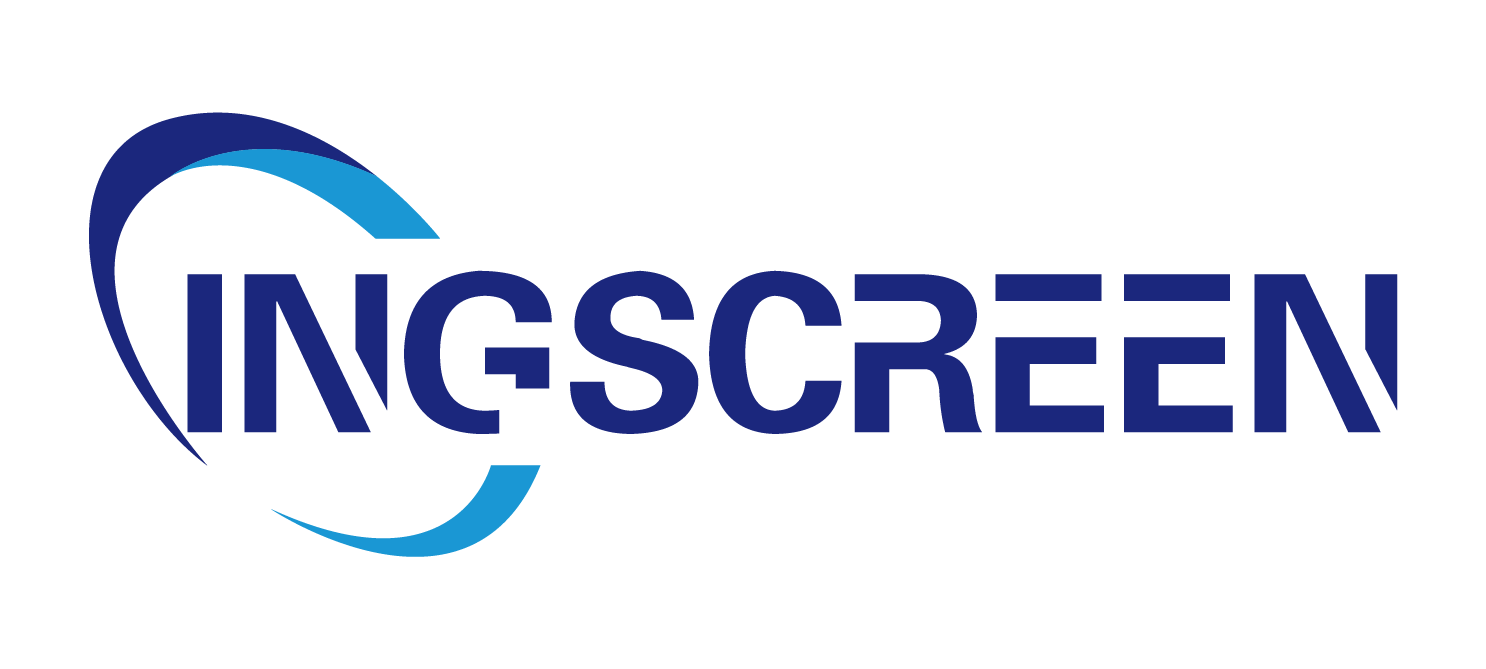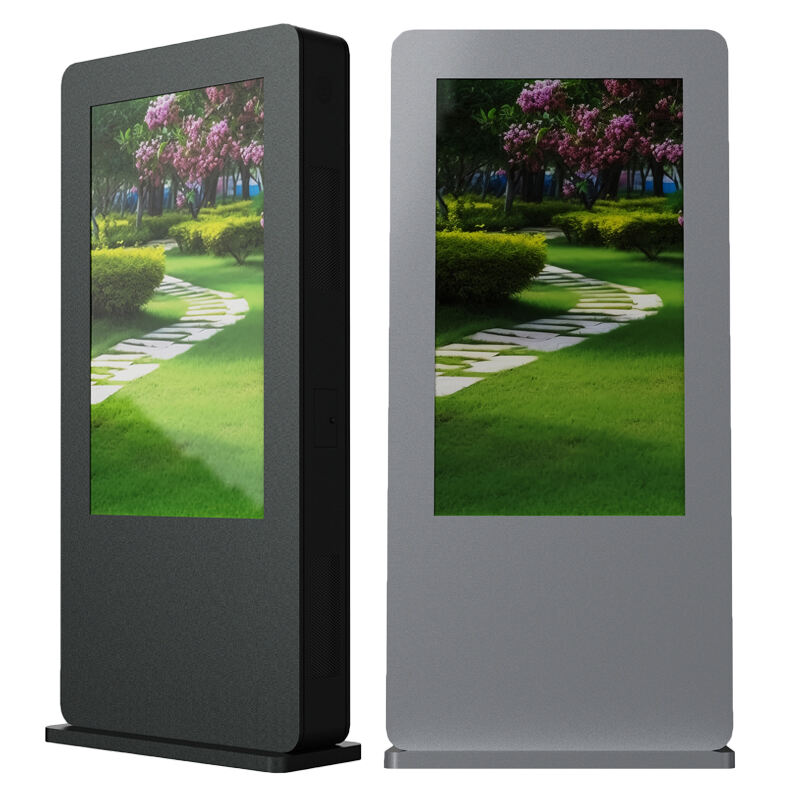耐候性耐久性: 屋外 デジタルサイネージ 要素に打ち勝つ
都市環境向けの防犯対策付きエンクロージャ
都市環境において、屋外デジタルサイネージに対する防犯機能の重要性は強調しすぎることはできません。これらの地域では、破壊行為のリスクが非常に高いため、防犯機能を持つデジタルサイネージは不可欠です。これは、サイネージへの投資に大きな影響を与える可能性があるからです。例えば、統計によると、破壊行為はメンテナンスコストの増加やサイネージの耐用年数の短縮につながるため、堅牢なセキュリティ対策が必要です。重厚なアルミニウムやポリカーボネートなどの素材は、通常、防犯目的のエンクロージャーを作るために使用され、耐久性を向上させ、潜在的な損傷からサイネージを保護します。これらの素材は、単に表示を保護するだけでなく、都市環境による課題に対してその長期的な機能性を確保する防御層を提供します。
高度な熱管理システム
サーマルマネジメントシステムは不可欠です 屋外デジタルサイネージ 内部温度を調節し、特に過酷な気候条件下で過熱を防ぐためには、パッシブ冷却やアクティブ換気技術を含むこれらのシステムが、デジタルディスプレイの最適な動作条件を維持するのに役立ちます。例えば、パッシブ冷却は機械式部品に依存することなく自然に熱を放散するのに対し、アクティブ換気はファンを使用して空気を循環させ、温度を動的に管理します。デジタルサイネージの製造メーカーによると、これらのシステムは、屋外ディスプレイの耐久性を高め、敏感な電子部品を極端な温度変化から保護することで、その寿命を大幅に延ばします。専門家の意見では、特に気象条件が変化しやすい地域において、屋外用デジタルサイネージにこのような高度な熱管理ソリューションを統合することが、耐久性と安定した性能を確保するために重要であるとされています。
長期使用向けアンチディスカレーショントecnology
退色防止技術は、屋外デジタルサイネージにおいて重要な役割を果たします。この技術は、鮮やかな色を維持し、UV露出による褪色を防ぎます。一貫した日光の露出は急速な退色を引き起こす可能性があり、時間が経つにつれて表示がくすんで効果が低下する原因となります。研究によると、退色防止コーティングが施されたディスプレイは、未処理のものと比較して著しく長い寿命を持つことが示されています。これは、その技術の有効性を強調しています。経済的な面では、退色防止措置を講じることで、頻繁なサイネージの交換が必要なくなり、企業にとって長期的な財政的メリットを提供します。UVダメージから保護することで、退色防止技術はデジタルサイネージが魅力的かつ機能的に保たれ、最終的には長期間の使用をサポートし、投資を守ります。
高輝度ディスプレイ:直射日光でも見える
ニット評価について:屋外視認性に必要な要素
ニットの評価を理解することは、屋外環境での表示輝度を決定する上で重要です。「ニット」とはスクリーンが発する光の量を測定する単位で、高いニット値はより明るい輝度に対応します。屋外での可視性を確保するためには、専門家が最低1000ニットを推奨しており、これはショッピングセンターや空港などの混雑した場所でも鮮明に見えることを可能にします。最近のニット技術の進歩により、屋外サインの解決策が改善され、明るい日差しによって通常のディスプレイが見えにくくなる環境でも、ユーザーとのエンゲージメントが向上しました。
アンチグレアコートと日光下的読取りやすさ
反射防止コーティングは、直射日光による反射と眩しさを最小限に抑えることで、可読性を向上させるために不可欠です。このコーティングが搭載されたディスプレイに対して、ユーザーは肯定的なレビューを寄せており、さまざまな光条件の下で可読性に明显的な改善があると指摘しています。高輝度ディスプレイと組み合わせることで、反射防止技術は最適なユーザーエクスペリエンスとエンゲージメントを保証します。様々な産業からの証言は、これらの技術が屋外でクリアで魅力的なコンテンツの可視性を維持する上で重要な役割を果たしていることを強調しています。
事例: リンカーンパーク動物園の昼間の成功
リンカーンパーク動物園は、高輝度の屋外ディスプレイを成功裡に統合するための説得力のある事例を提供しています。設置後、動物園はこれらのディスプレイによる来場者のインタラクション向上を示すデータを基に、観客とのエンゲージメントが増加したと報告しました。この実装から得られた重要な教訓として、効率的に日光条件下に適応するために、高ニット評価のスクリーンやアンチグレアコーティングなどの適切な技術を選択することが重要であることが挙げられます。これらの知見は、訪問者の体験を改善するために同様の技術アップグレードを検討している他の会場にとって貴重なガイダンスとなります。
ダイナミックメッセージ向けのスマートコンテンツ管理
クラウドベースのリモートコントロールシステム
クラウドベースのリモートコントロールシステムは、屋外デジタルサインのリアルタイム管理において大きな利点を提供します。これらのシステムはシームレスな統合を提供し、企業がディスプレイの場所に関係なくコンテンツを即座に更新できるようにします。強化されたセキュリティプロトコルにより、データが保護され、リモートでのコンテンツコントロールに適した安全な環境が提供されます。最近の統計によると、クラウドソリューションを使用している60%以上の企業が、デジタルコンテンツ管理の効率向上を報告しており、運用能力における顕著な改善が示されています。
時間に敏感なキャンペーンのためのリアルタイムアップデート
リアルタイム更新は、時間に敏感なキャンペーンを実施する企業にとってデジタルサイネージシステムで非常に重要です。コンテンツを迅速に変更できる能力により、企業は状況の変化や消費者のトレンドに対応することができます。小売業者、スポーツアリーナ、イベント主催者は特にこの機能から恩恵を受け、メッセージが最新かつ関連性のあるものであることを確実にします。あるケーススタディでは、小売企業がディスプレイ上の適時の更新によりフラッシュセールでの売上が40%増加したことが示され、タイミングの良いメッセージングの財務的な影響が強調されました。
複数拠点における集中スケジューリング
複数の屋外サイン設置を持つブランドにとって、集中スケジューリングは効率的なアプローチを提供します。この方法は、さまざまな場所での一貫性を維持し、運用コストを削減するために重要です。高度なスケジューリングツールはこれらのプロセスを簡素化し、コンテンツが意図したとおりに同期されていることを保証します。屋外デジタルディスプレイの集中管理システムを使用している企業からのフィードバックは非常にポジティブで、多くの企業が運用効率の向上とロジスティック問題の減少を指摘しています。集中スケジューリングは時間の節約だけでなく、重複を最小限に抑えるため、現代のビジネスにとって欠かせない戦略です。
屋外環境用技術仕様
IPレーティング: 水・塵埃抵抗の理解
IPレーティングは、屋外デジタルサイネージの耐久性を水や埃に対する抵抗の観点で評価する上で重要です。これらのレーティングは、2桁のコードで示され、ディスプレイがどれだけ環境要素に耐えられるかを示します。例えば、IP65というレーティングは、埃に対する優れた保護性能と低圧の水流に対する保護を意味し、比較的過酷な気候にも適しています。業界標準では、大雨や多くの埃がある場所にはIP67以上のレーティングが推奨されており、これによりデバイスが長期間にわたって動作し、最小限のメンテナンスで済むようになります。したがって、適切なIPレーティングを選択することは、長期的なメンテナンスコストを削減し、屋外ディスプレイの寿命を確保するために重要です。
腐食に強い材料チェックリスト
屋外デジタルサインを設置する際には、耐食性のある素材を選ぶことが重要です。チェックリストには、ステンレス鋼、アルミニウム合金、および耐用年数を延ばし、悪天候での劣化を防ぐ保護コーティングが含まれるべきです。これらの素材は、曝露レベルや腐食に応じて異なる寿命を持っています。例えば、ステンレス鋼はその耐久性和低メンテナンスの必要性から、高湿度環境に最適です。統計によると、このような素材を使用することで、非耐食性素材と比較して設置の寿命を最大20%延ばすことができます。様々な環境における成功事例では、これらの素材が腐食を防ぎ、保守労力を削減したことが示されており、屋外サインにおけるその価値が証明されています。
極端な温度条件における電力効率
電力効率は、特に極端な気温の地域における屋外デジタルサイネージにおいて重要です。表示装置が暑さや寒冷地でも効率的に機能し続けることで、大幅なエネルギー節約につながります。LEDバックライトやアダプティブ輝度制御などの技術は、表示品質を損なうことなく消費電力を削減することでエネルギー効率を向上させます。専門家によると、省エネルギー実践を取り入れることで運用コストを大幅に削減でき、経済的および環境的なメリットが得られます。高い電力効率を維持することは、単なる財政的な節約だけでなく、過酷な気候における屋外デジタルサイネージソリューションの持続可能性全体に貢献します。
屋外サイネージ投資の将来性を確保する
新興技術のためのモジュラー型アップグレード
モジュラー方式のアップグレードは、完全なシステム刷新を行うことなく屋外デジタルサイネージを最新に保ちたいと考える企業にとって大きな利点を提供します。モジュラー設計を採用することで、企業は新しい技術が登場次第、それをスムーズに取り込むことができ、サイネージを常に最先端の技術で維持することができます。この柔軟性は、AIやデータ分析、インタラクティブ技術などの統合を含む屋外デジタルサイネージのトレンドが進化する中でますます重要になっています。例えば、モジュラー方式を採用した企業は、競争優位を維持し、顧客エンゲージメントが向上したという成功事例をよく共有しています。これらの事例は、モジュラー設計が将来にわたって有効な投資であり、技術革新の中で企業が適応し成長できる手助けになると示しています。

IoT統合による予測保全
IoT技術を屋外デジタルサイネージに統合することで、予測保守が可能になり、ダウンタイムや予期せぬ中断を大幅に削減できます。この技術はリアルタイムでの監視と診断を可能にし、問題が深刻なトラブルになる前に対処することができます。例えば、データによると、IoTソリューションを採用した組織では平均的なメンテナンスコストが最大30%削減される可能性があります。この予防的なメンテナンスのアプローチは、高額な修理の可能性を低減するだけでなく、サイネージシステムの信頼性と耐用年数を向上させます。IoTがさらに成熟するにつれて、その役割はデジタルサイネージの分野で拡大し、効率を向上させ、サイネージシステムの無停止運転を確保することでビジネスパフォーマンスを変革する可能性があります。
持続可能性:省エネルギーLEDイノベーション
持続可能性は、屋外デジタルサイネージの設計と実装において重要な要素となっています。エネルギー効率の高いLEDイノベーションがその先頭に立っています。これらの進歩は、電力消費を削減し、環境への影響を最小限に抑えるのに重要です。最近の統計によると、LED技術は従来の照明方法と比較して最大75%のエネルギー節約につながる可能性があります。環境専門家は、このような持続可能な実践を採用する必要性を強調しており、それが単に運用コストを削減するだけでなく、世界的な二酸化炭素排出量削減努力と一致することを指摘しています。企業や消費者がますます環境意識を持つようになる中で、エネルギー効率の高いLEDソリューションは、持続可能なサイネージの未来において重要な役割を果たすでしょう。
よくある質問
防犯対策のための筐体にはどのような素材が使用されていますか?
堅牢なアルミニウムとポリカーボネートは、防犯対策のための筐体を作成するために一般的に使用され、耐久性を高め、サイネージを潜在的な損傷から保護します。
なぜ屋外サインには防変色技術が重要ですか?
防変色技術は、UV線への曝露にもかかわらず、屋外デジタルサインの褪色を防ぎ、鮮やかな色を維持し、表示が効果的で視覚的に魅力的であることを確保します。
屋外ディスプレイに推奨されるニット評価はどれですか?
屋外での可視性のために、専門家は明るい日差しの中でもクリアな可視性を確保するために最低1000ニットを推奨しています。
中央集中的なスケジューリングが複数の屋外サインを持つブランドにどのように利益をもたらすことができますか?
中央集中的スケジューリングは、一貫性を維持し、運用コストを削減し、複数の屋外サイン設置を持つブランドにとってさまざまな場所での管理を簡素化します。
IoTを屋外デジタルサイネージに統合することによるメリットは何ですか?
IoTを屋外デジタルサイネージに統合することで、予測保守が可能になり、ダウンタイムが削減され、サインシステムの信頼性和効率が向上します。




